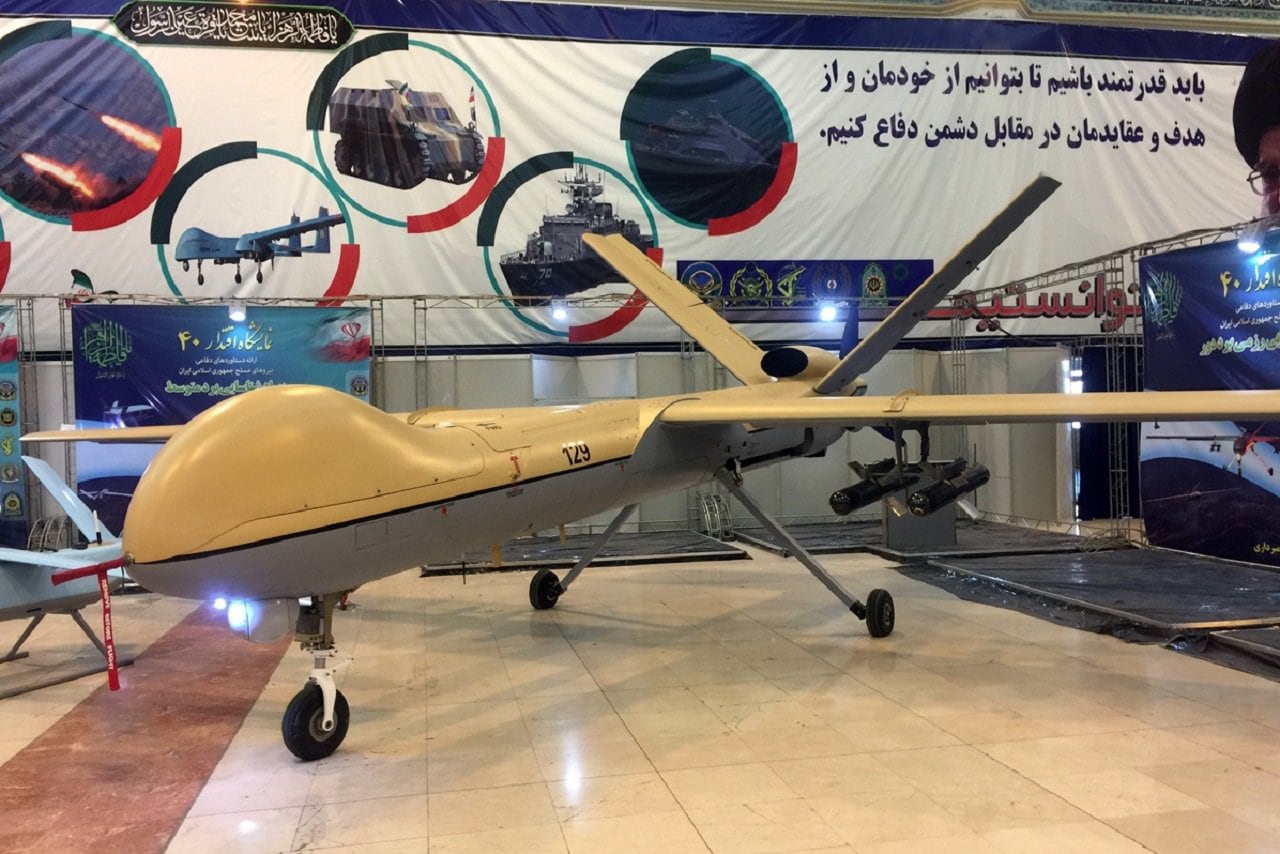Over the weekend, Iran’s navy debuted a fleet of vessels that can carry armed drones, according to state-run media. This development came amid U.S. President Joe Biden’s trip to the Middle East, which in part focused on unifying regional allies to counter Iran. The report also underscores Iran’s growing dependence on weaponized drones to conduct operations throughout the Middle East. Since the Islamic Revolutionary Guard Corps and its regional proxies use drones to target U.S. troops and assets, its ability to deploy these weapons from the sea is a dangerous development.
Drones Are the Ideal Rogue Weapon
Reporting on the Iranian navy’s new “special division,” state-run Presstv.ir said the recent upgrades “enable the naval force to have operational and air superiority in the depth of oceans while also boosting intelligence hundreds of kilometers away from surface and subsurface units.”
The report added that, “The Islamic Republic’s military doctrine holds that the country’s armed capability solely serves defensive purposes and poses no threat to other states.” This is a standard claim the regime has made for decades, and its actions suggest otherwise. In fact, Iran has used increasingly lethal drones to attack its adversaries throughout the region in recent years. As outlined by Jerusalem Post analyst Seth Frantzman, the drone is the ideal weapon for a rogue regime. Since a drone does not necessarily need to be equipped with a radar that exposes its original location, its source may not be obvious. Iran has used this plausible deniability to escape responsibility for its attacks in the past.
In 2020, a report released by the Conflict Armament Research group revealed the reach of Iran’s drones. The report mapped out eight countries where Iranian drone parts had been located. With proxies throughout the Middle East, the Guard Corps is able to conduct covert operations across the region. It is well documented that the regime funds and provides military assistance to militias in Iraq, Syria, Yemen, and Lebanon. Since the 2020 U.S.-targeted killing of revered IRGC commander Gen. Qassem Soleimani, Iran-backed entities in Iraq have carried out dozens of attacks targeting American personnel and facilities.
Over the past two years, the armed drones these groups use have become increasingly advanced and dangerous. Last summer, former commander of U.S. Central Command Gen. Kenneth McKenzie expressed concern over Iran’s expanding drone arsenal in testimony before the Senate Armed Services Committee. Referring to the regime’s growing stockpile of armed drones, McKenzie said they “present a new and complex threat to our forces and those of our partners and allies.
“For the first time since the Korean War, we are operating without complete air superiority. Until we are able to develop and field a networked capability to detect and defeat [UAVs], the advantage will remain with the attacker.”
Curious Timing
Iran’s newly proclaimed ability to deploy its arsenal of UAVs at sea does not bode well for regional adversaries. In visuals released by state-media, the Arash suicide drone, along with a surveillance drone called the Pelican, can be seen on two vessels and one Kilo-class submarine.
According to Maritime Exclusive, the vessels include the IRIS Lavan and the Pakistani-constructed auxiliary IRIS Delvar. Iran first unveiled its Arash suicide drone during November 2021 wargames around the Strait of Hormuz, the Sea of Oman, the Red Sea, and the Indian Ocean. The domestically made drone was introduced in 2020 and has a range of over 1,200 miles. Deploying the Arash from the sea would allow Iran’s navy to pursue more difficult targets.
The sea-based drone fleet debuts as reports emerge that Tehran may supply Moscow with armed UAVs in the near future. Tehran has largely been iced out of the international community because of its malign behavior, so the regime has sought to tighten its ties to Moscow and Beijing in recent years. Additionally, the regime wants to project a formidable counter to the growing, U.S.-led Middle East coalition.
Maya Carlin is a Middle East Defense Editor with 19FortyFive. She is also an analyst with the Center for Security Policy and a former Anna Sobol Levy Fellow at IDC Herzliya in Israel. She has by-lines in many publications, including The National Interest, Jerusalem Post, and Times of Israel.

